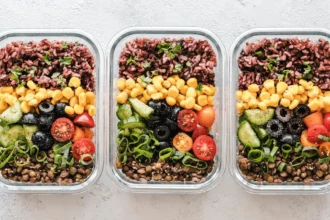
Reading nutrition labels effectively can transform your health journey, yet studies reveal that half of the world’s consumers only “partly” understand the nutritional labels on food. Whether you’re shopping in Tokyo, Toronto, or Timbuktu, the ability to decode food labels empowers you to make informed choices that support your wellness goals. This comprehensive guide will teach you how to read nutrition labels like a seasoned nutritionist, helping you navigate the complex world of food marketing and ingredient lists.
Why Reading Nutrition Labels Matters
Understanding nutrition facts labels is crucial for maintaining optimal health in our processed food world. When you know how to read nutrition labels properly, you gain control over your dietary choices and can avoid falling victim to misleading marketing claims. The health implications are significant: making informed food choices based on accurate label reading can help prevent chronic diseases, manage weight, and improve overall wellbeing.
From a financial perspective, smart label reading helps you get better value for your money. You’ll stop paying premium prices for products that market themselves as “healthy” but contain the same ingredients as cheaper alternatives. Additionally, understanding nutrition labels helps you build sustainable, long-term healthy eating habits rather than relying on restrictive diets or trendy superfoods.
The skills you learn for food label reading apply globally, as most countries follow similar nutritional labeling standards with slight regional variations.
Also read: The Ultimate Guide to Eating Healthy: What to Eat, What to Avoid, and How to Build Better Habits
The Anatomy of a Nutrition Label
Serving Size & Servings Per Container
The serving size is your foundation for understanding any nutrition facts label. This measurement determines all other nutritional values on the label, making it the most critical element to check first. If a package contains 4 servings and you eat the entire package, you would consume 4 servings, or 1,120 calories if each serving contained 280 calories.
Manufacturers often use unrealistically small serving sizes to make their products appear healthier. A single muffin might be labeled as “2 servings,” or a small bag of chips could claim to contain “2.5 servings.” Always compare the serving size on the label to the amount you actually plan to eat.
Calories Per Serving
Calories represent the energy your body gets from food. Understanding calorie content helps you balance your energy intake with your daily needs. 2,000 calories a day is used as a general guide for nutrition advice, though individual needs vary based on age, gender, activity level, and metabolic rate.
When reading labels for calorie information, remember that all calories shown are per serving, not per package. This distinction becomes crucial when comparing products or calculating your daily intake.
Nutrients Section Overview
The nutrients section breaks down macronutrients (carbohydrates, proteins, fats) and micronutrients (vitamins and minerals). The percentage Daily Value (%DV) shows how much of your daily nutrient needs one serving provides, based on a 2,000-calorie diet. According to the FDA’s official guidance, understanding these percentages helps you quickly assess whether a food is high or low in specific nutrients.
The 5-Step Pro Method for Reading Labels
Step 1: Start with Serving Size
Always examine the serving size first before analyzing any other information on nutrition labels. This step prevents the most common mistake in label reading: assuming nutritional values apply to the entire package. Compare the listed serving size to your typical portion to get accurate nutritional information.
For quick mental calculations, if you typically eat twice the serving size, simply double all the nutritional values. If the serving size seems unusually small, investigate whether the manufacturer is trying to make the product appear healthier than it actually is.
Step 2: Scan the Ingredient List
Ingredients appear in descending order by weight, so the first few items make up most of the product. When learning how to read nutrition labels effectively, the FDA’s updated nutrition facts label guide emphasizes focusing on recognizing whole food ingredients versus processed additives.
There are at least 61 different names for sugar listed on food labels, making it easy for manufacturers to hide sugar content. Common sugar aliases include high-fructose corn syrup, dextrose, maltose, agave nectar, brown rice syrup, and coconut sugar. The more sugar names you spot in the ingredient list, the higher the total sugar content.
Look for whole food ingredients you recognize and can pronounce. If the ingredient list reads like a chemistry experiment, consider choosing a simpler alternative with fewer processed components.
Step 3: Check Key Nutrients
Focus on limiting saturated fats, sodium, and added sugars while seeking adequate fiber, protein, vitamins, and minerals. The %DV provides a quick reference: 5% DV or less is considered low, while 20% DV or higher is high.
For nutrients to limit (saturated fat, sodium, added sugars), choose foods with lower %DV values. For beneficial nutrients (fiber, protein, calcium, iron), select foods with higher %DV percentages. The FDA considers 5% DV or less as low and 20% DV or higher as high for any given nutrient.
Pay special attention to added sugars, which have been linked to various health issues. The American Heart Association recommends limiting added sugars to no more than 6% of daily calories for women (about 6 teaspoons) and 9% for men (about 9 teaspoons).
Step 4: Compare Similar Products
Use nutrition labels to make side-by-side comparisons between similar products. When comparing, ensure you’re looking at equivalent serving sizes, as manufacturers may use different portion sizes to make their products appear more favorable.
Calculate the price per serving alongside nutritional value to find the best overall value. Sometimes spending slightly more on a nutrient-dense option provides better nutrition per dollar than cheaper, less nutritious alternatives.
Consider the complete nutritional profile rather than focusing on single nutrients. A product might be low in fat but high in sodium or added sugars, making it less healthy overall.
Step 5: Look Beyond the Front Package
Front-of-package marketing claims like “natural,” “organic,” or “healthy” don’t always correlate with superior nutrition. These terms are regulated differently across countries, and some have no official definition. Always verify marketing claims by examining the actual nutrition facts panel and ingredient list.
Terms like “reduced fat” only mean the product contains 25% less fat than the original version, which could still be significant. “No added sugar” doesn’t mean sugar-free, as the product may contain naturally occurring sugars or artificial sweeteners.
Focus on the back panel nutrition facts and ingredient list for accurate information rather than trusting front-of-package claims designed to attract your attention.
Common Label Reading Mistakes to Avoid
Many people ignore serving sizes and assume nutritional information applies to the entire package. This mistake can lead to consuming double or triple the intended calories, sodium, or sugar without realizing it.
Don’t fall for attractive front-of-package marketing claims without verifying them through the nutrition facts label. Products marketed as “healthy” or “natural” may still contain high amounts of sodium, saturated fat, or added sugars.
Another common error is focusing exclusively on calories while ignoring other important nutrients. A low-calorie food that’s high in sodium or lacking in beneficial nutrients may not be the healthiest choice for your overall diet.
Assuming “fat-free” automatically means healthy overlooks the fact that manufacturers often replace fat with sugar or sodium to maintain flavor. Always read ingredient lists and check for added sugars in fat-free products.
Quick Reference: What to Look For
Green Light Foods contain high amounts of fiber, protein, vitamins, and minerals while being low in sodium, saturated fat, and added sugars. These foods typically have ingredient lists with recognizable, whole food components and minimal processing.
Yellow Light Foods fall in the middle range for nutrients you want to limit. They can be part of a balanced diet when consumed in moderation and balanced with more nutritious choices throughout the day.
Red Light Foods are high in sodium, saturated fat, added sugars, or calories while providing minimal beneficial nutrients. These should be occasional treats rather than dietary staples, regardless of clever marketing messages.
When shopping globally, these principles apply across different countries’ labeling systems, though specific formatting and regulations may vary by region.
Practical Tips for Grocery Shopping
Bring your smartphone’s calculator function for quick nutritional comparisons and serving size adjustments. Consumers are increasingly checking ingredient and nutrition labels, with 43% reporting they check both, showing growing awareness of the importance of informed food choices.
Shop the store perimeter first, where fresh produce, dairy, and proteins typically have simpler labels or no labels at all. These whole foods often provide better nutrition with fewer ingredients to decode.
When comparing packaged products in the same category, line up several options and compare them systematically using your 5-step method. This batch comparison approach saves time and helps you make better decisions.
Consider downloading nutrition apps that can scan barcodes and provide additional nutritional insights, or reference the USDA’s FoodData Central database for comprehensive nutritional information, though always verify information with the actual product label.
For busy shopping trips, focus on the most important elements: serving size, ingredient list (first 3-5 ingredients), and nutrients you’re specifically trying to limit or increase based on your health goals.
Conclusion
Learning how to read nutrition labels like a pro transforms grocery shopping from a guessing game into an informed decision-making process. The 5-step method starting with serving size, examining ingredients, checking key nutrients, comparing products, and looking beyond marketing claims provides a systematic approach to food selection.
With practice, nutrition label reading becomes second nature, empowering you to make choices that align with your health goals regardless of where you shop around the world. Start implementing these strategies on your next grocery trip, and remember that every small improvement in food selection contributes to your long-term health and wellbeing.
The investment in learning these skills pays dividends in better health, smarter spending, and freedom from misleading food marketing. Master nutrition facts labels, and you master an essential tool for lifelong wellness.






2 Comments